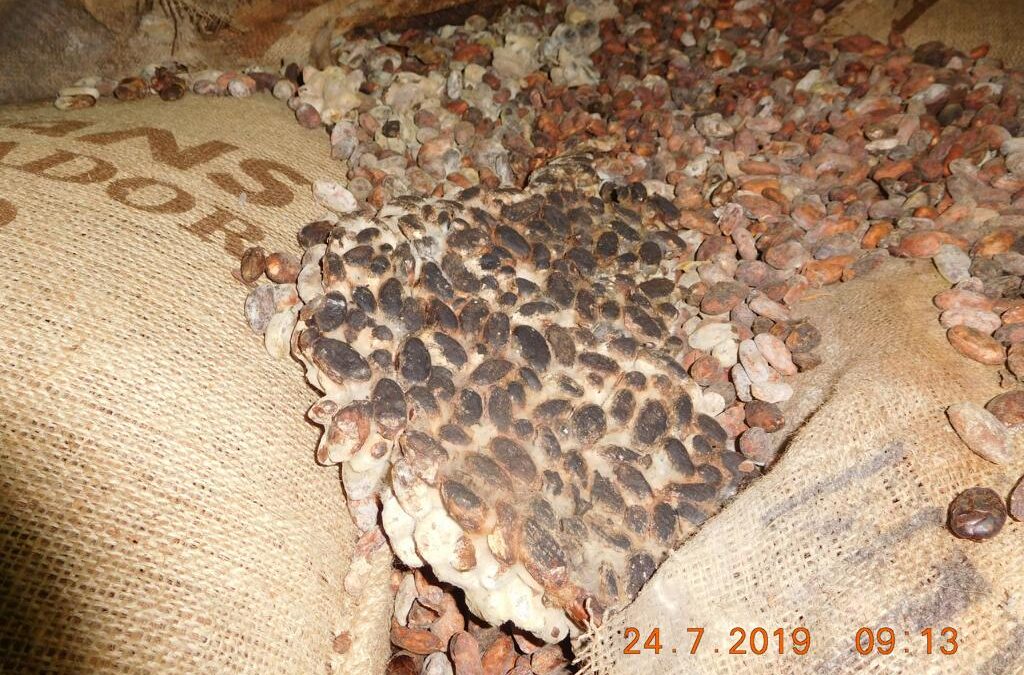LOADING SURVEY
SHORE’S TANKS / TERMINAL
a) Informing the terminal regarding surveyor attendance.
b) Discussing with terminal and surveyor regarding survey activity and loading plan:
– Nominated and non-nominated tanks that connected.
– Checking the line flushing log activity.
– Measuring method that using in custody transfer.
c) Checking legality and validity of shore tanks and ensure the correctness function of measurement tools (UTI: Ullage – Temperature – Interface, Dip Tape, ATG – Automatic Tank Gauging, metering systems).
d) Checking the pipe packing line from nomination tanks to flange / loading arm. Ensuring all of valves that connecting with nominated tanks and transfer line are in closed and sealed (if possible).
e) Witnessing the measuring of oil level, free water and temperature on nominated tanks and non-nominated tanks for FSO terminal.
f) Reading the Ship‘s Draft, Trim, List and Heel accompanied by terminal reps on FSO Terminal.
g) Calculating the volume of cargo by using standard ASTM table 6 / table 54 or others standard required at terminal.
h) Flow rate monitoring.
i) Re-checking and re-calculating for any cargo disputes at received shore tanks above the tolerance (R1 – Loading Loss).
SHIP’S TANKS
j) Informing the ship regarding surveyor attendance.
k) Pre-loading meeting with ship and terminal representatives.
l) Discussing with terminal and surveyor regarding survey activity and loading plan:
– Nominated and non-nominated tanks that connected.
– Loading sequence (first and second loaded tanks).
– Flow rate and pump pressure.
m) Reading the Ship‘s Draft, Trim, List and Heel accompanied by parties on board.
n) Checking legality, validity and correctness function of measurement tools (UTI: Ullage – Temperature – Interface, Dip Tape, capacity table, oil paste, water paste).
o) Checking the seal at manifold Port and Starboard, manhole, sampling hole, Slop valves and Stripping valves.
p) Verification on board quantity (OBQ) before loading.
q) Document verification of remaining on board (ROB) previous port.
r) Monitoring flow rate.
s) After loading, witnessing the measuring of oil level, free water and temperature on nominated tanks and non-nominated tanks. All cargo oil tanks, slop tanks, bunker tanks (including fore bunker tanks), Cofferdam, Ballast tanks and non-nominated cargo tanks is included.
t) Calculating the volume of cargo by using standard ASTM table 6 / table 54 or other standard required at terminal.
u) Re-checking and re-calculating for any cargo disputes at received shore tanks above the tolerance (R1 – Loading Loss).
DISCHARGING SURVEY
SHIP’S TANKS
a) Informing the ship regarding surveyor attendance.
b) Pre-discharge meeting with ship and terminal representatives.
c) Reading the Ship‘s Draft, Trim, List and Heel accompanied by terminal reps.
d) Prior discharging, checking sea chest valve, overboard, drain valve and all of valves that connecting with non-nominated tanks to ensure all closed condition and the seal from loading port are intact.
e) Checking the seal at manifold Port and Starboard, manhole, sampling hole, Slop valves and Stripping valves.
f) Witnessing the measuring of oil level, free water and temperature on nominated tanks and non-nominated tanks. All cargo oil tanks, slop tanks, bunker tanks (including fore bunker tanks), Cofferdam, Ballast tanks and non-nominated cargo tanks is included.
g) Calculating the volume of cargo by using standard ASTM table 6 / table 54 or other standard required at terminal.
h) Re-checking and re-calculating for any cargo disputes at received shore tanks above the tolerance 0.5% (R4 – Supply Loss).
i) Remaining on board (ROB) verification after discharging.
j) Evaluating and analyzing of any issues before, during and after discharging.
SHORE’S TANKS / TERMINAL
k) Informing the terminal regarding surveyor attendance.
l) Discussing with terminal and surveyor regarding survey activity and discharging plan:
– Nominated and non-nominated tanks that connected.
– Checking the line flushing log activity.
– Measuring method that using in custody transfer.
m) Checking legality and validity of shore tanks and ensure the correctness function of measurement tools (UTI: Ullage – Temperature – Interface, Dip Tape, ATG – Automatic Tank Gauging, metering systems).
n) Checking the pipe packing line from nomination tanks to flange / loading arm. Ensuring all of valves that connecting with nominated tanks and transfer line are in closed and sealed (if possible).
o) Witnessing the measuring of oil level, free water and temperature on nominated tanks and non-nominated tanks for FSO terminal.
p) Calculating the volume of cargo by using standard ASTM table 6 / table 54 or others standard required at terminal.
q) Re-checking and re-calculating for any cargo disputes at received shore tanks above the tolerance 0.5% (R4 – Supply Loss).
r) Evaluating and analyzing of any issues before, during and after discharging.

